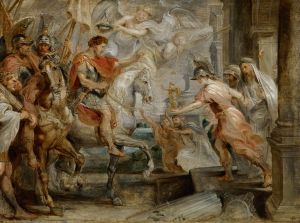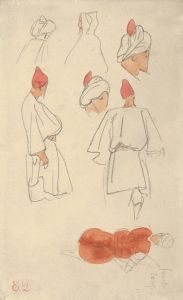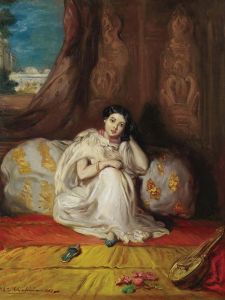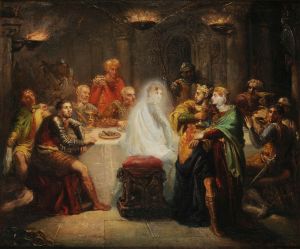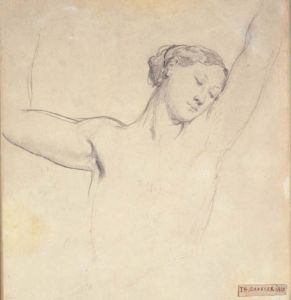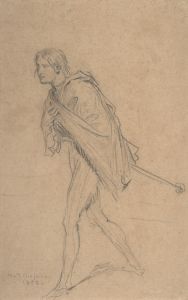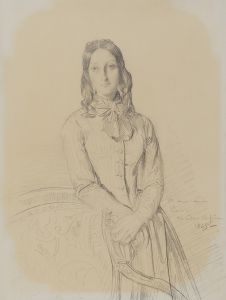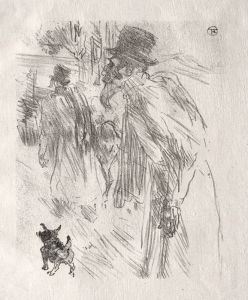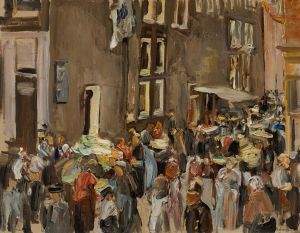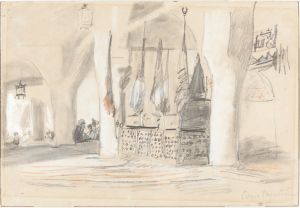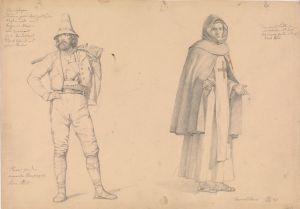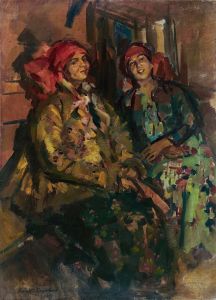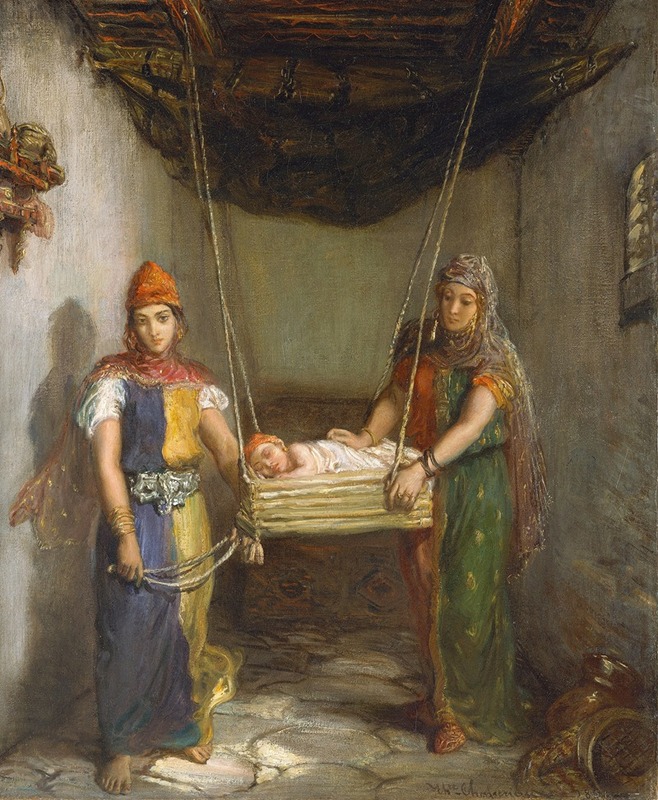
Scene in the Jewish Quarter of Constantine
A hand-painted replica of Théodore Chassériau’s masterpiece Scene in the Jewish Quarter of Constantine, meticulously crafted by professional artists to capture the true essence of the original. Each piece is created with museum-quality canvas and rare mineral pigments, carefully painted by experienced artists with delicate brushstrokes and rich, layered colors to perfectly recreate the texture of the original artwork. Unlike machine-printed reproductions, this hand-painted version brings the painting to life, infused with the artist’s emotions and skill in every stroke. Whether for personal collection or home decoration, it instantly elevates the artistic atmosphere of any space.
"Scene in the Jewish Quarter of Constantine" is a painting by the French Romantic artist Théodore Chassériau, completed in 1851. Chassériau, known for his unique blend of Romanticism and Orientalism, was a prominent figure in 19th-century French art. This particular work is a testament to his fascination with North African culture and his ability to capture the essence of the places he visited.
Théodore Chassériau was born on September 20, 1819, in El Limón, a coffee plantation in what is now the Dominican Republic. He moved to Paris at a young age, where he studied under the tutelage of Jean-Auguste-Dominique Ingres, a leading Neoclassical painter. Chassériau's style evolved over time, incorporating elements of Romanticism and Orientalism, which became evident in his later works.
In 1846, Chassériau traveled to Algeria, a French colony at the time, which had a profound impact on his artistic direction. His journey to North Africa inspired a series of paintings that depicted the people and landscapes of the region. "Scene in the Jewish Quarter of Constantine" is one such painting, reflecting his interest in the diverse cultures he encountered.
Constantine, a city in northeastern Algeria, is known for its rich history and cultural diversity. During Chassériau's visit, the city had a significant Jewish population, which had been present for centuries. The painting captures a moment in the Jewish quarter of the city, offering a glimpse into the daily life and atmosphere of the community.
Chassériau's work is characterized by its vivid use of color and attention to detail, both of which are evident in this painting. The composition is carefully arranged, with figures depicted in traditional attire, engaged in various activities. The artist's use of light and shadow adds depth to the scene, creating a sense of realism and immediacy.
"Scene in the Jewish Quarter of Constantine" is notable for its empathetic portrayal of its subjects. Chassériau's ability to convey the dignity and humanity of the people he painted is a hallmark of his work. This painting, like many of his others, reflects his deep respect and admiration for the cultures he encountered during his travels.
The painting is housed in the Musée du Louvre in Paris, where it is part of the museum's extensive collection of 19th-century art. It continues to be appreciated for its artistic merit and historical significance, offering insights into the cultural interactions of the time.
Chassériau's work, including "Scene in the Jewish Quarter of Constantine," remains influential in the study of Orientalism and 19th-century art. His paintings provide valuable perspectives on the cultural exchanges between Europe and North Africa during the colonial period. Through his art, Chassériau invites viewers to explore the complexities and beauty of the world he experienced, making his work enduringly relevant.





